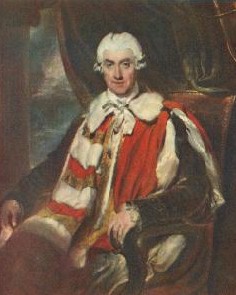
Thomas Thynne, 1st Marquess of Bath, KG, PC, of Longleat in Wiltshire, was a British politician who held office under King George III. He served as Southern Secretary, Northern Secretary and Lord Lieutenant of Ireland. Between 1751 and 1789, he was known as the 3rd Viscount Weymouth. He is possibly best known for his role in the Falklands Crisis of 1770.

Marquess of Bath is a title in the Peerage of Great Britain. It was created in 1789 for Thomas Thynne, Viscount Weymouth. The Marquess holds the subsidiary titles Baron Thynne, of Warminster in the County of Wiltshire
, and Viscount Weymouth, both created in 1682 in the Peerage of England. He is also a baronet in the Baronetage of England.

Longleat is an English stately home and the seat of the Marquesses of Bath. It is a leading and early example of the Elizabethan prodigy house. It is adjacent to the village of Horningsham and near the towns of Warminster and Westbury in Wiltshire and Frome in Somerset. It is noted for its Elizabethan country house, maze, landscaped parkland and safari park. The house is set in 1,000 acres (400 ha) of parkland landscaped by Capability Brown, with 4,000 acres (1,600 ha) of let farmland and 4,000 acres (1,600 ha) of woodland, which includes a Center Parcs holiday village. It was the first stately home to open to the public, and the Longleat estate includes the first safari park outside Africa.

Charlotte Anne Montagu Douglas Scott, Duchess of Buccleuch and Queensberry, VA was a British peeress. A daughter of Thomas Thynne, 2nd Marquess of Bath, Charlotte married Walter Montagu Douglas Scott, 5th Duke of Buccleuch in 1829. They had seven children, including William Montagu Douglas Scott, 6th Duke of Buccleuch, Henry Douglas-Scott-Montagu, 1st Baron Montagu of Beaulieu, and the Royal Navy admiral Lord Charles Montagu Douglas Scott.

Henry Frederick Thynne, 6th Marquess of Bath, JP, styled Lord Henry Thynne until 1916 and Viscount Weymouth between 1916 and 1946, was a British aristocrat, landowner and Conservative Party politician.
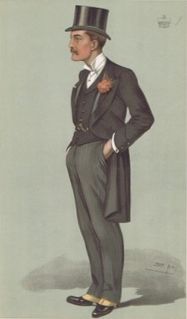
Thomas Henry Thynne, 5th Marquess of Bath, styled Viscount Weymouth until 1896, was a British landowner and Conservative politician. He held ministerial office as Under-Secretary of State for India in 1905 and Master of the Horse between 1922 and 1924. He was also involved in local politics and served as Chairman of Wiltshire County Council between 1906 and his death in 1946.

Henry Frederick Thynne, 3rd Marquess of Bath, styled Lord Henry Thynne until January 1837 and Viscount Weymouth between January and March 1837, was a British naval commander and politician.

Thomas Thynne, 2nd Marquess of Bath KG, styled Viscount Weymouth from 1789 until 1796, was a British peer.

Lord Henry Frederick Thynne PC, DL was a British Conservative politician. He served under Benjamin Disraeli as Treasurer of the Household between 1875 and 1880.
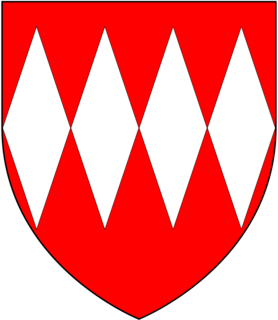
Baron Carteret is a title that has been created twice in British history, once in the Peerage of England and once in the Peerage of Great Britain. The first creation came into the Peerage of England in 1681 when the fourteen-year-old Sir George Carteret, 2nd Baronet, was made Baron Carteret, of Hawnes in the County of Bedford. The peerage was originally proposed for his grandfather Sir George Carteret, 1st Baronet, a celebrated royalist statesman, but he died before he was granted the title and as his eldest son, Philip, predeceased him, it was eventually bestowed on his grandson, George, with remainder to the latter's brothers. The Baronetcy, of Metesches in the Island of Jersey, had been created for George Carteret in the Baronetage of England on 9 May 1645. Lord Carteret married Lady Grace Granville, daughter of John Granville, 1st Earl of Bath. In 1715 Lady Grace was raised to the Peerage of Great Britain in her own right as Viscountess Carteret and Countess Granville. Lord Carteret and Lady Granville were both succeeded by their son John Carteret, the second Baron and second Earl. The titles became extinct on the death of the latter's son Robert Carteret, the third Earl, in 1776.
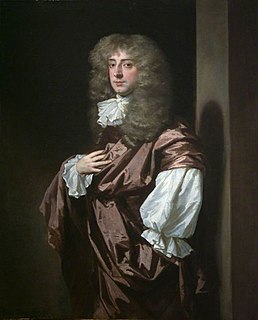
Thomas Thynne, 1st Viscount Weymouth was a British peer in the peerage of England.
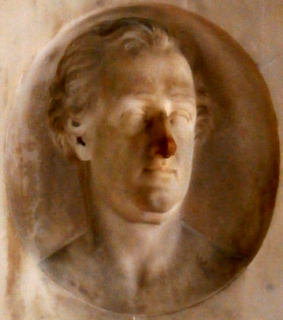
Henry Frederick Carteret, 1st Baron Carteret PC (1735–1826) of Hawnes, Bedfordshire, was Member of Parliament for Staffordshire (1757–61), for Weobley in Herefordshire (1761–70) and was Master of the Household to King George III 1768–1771. He was hereditary Bailiff of Jersey 1776–1826.

Thomas Thynne, 2nd Viscount Weymouth of Longleat House in Wiltshire was an English peer, descended from Sir John Thynne (c.1515-1580) builder of Longleat.
Henry Thynne may refer to:
George Thynne, 2nd Baron Carteret PC, styled Lord George Thynne between 1789 and 1826, was a British Tory politician.
Elizabeth Thynne, Marchioness of Bath, née Lady Elizabeth Bentinck, was a British courtier and the wife of Thomas Thynne, 1st Marquess of Bath. From 1761 to 1793, she was a Lady of the Bedchamber to Charlotte of Mecklenburg-Strelitz, queen consort of King George III of the United Kingdom. In 1793, as Dowager Marchioness, she became Mistress of the Robes and held that position until the queen's death in 1818.

Haynes Park is a Georgian country house which stands in parkland at Haynes Church End, Bedfordshire, England. It is a Grade I listed building.















